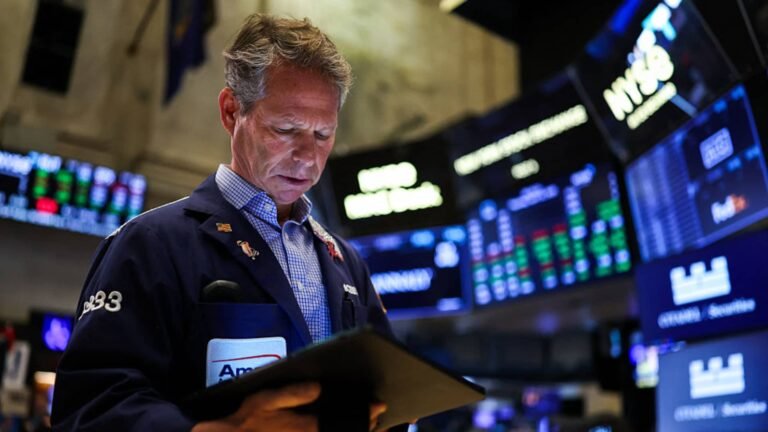Traders work on the floor of the New York Stock Exchange at the opening bell on April 10, 2025.
Charly Triballeau | Afp | Getty Images
The S&P 500 advanced in choppy trading on Thursday, the last trading day of the week, as traders looked to mitigate recent losses.
The broad index last traded 0.7% higher after seesawing between gains and losses during the trading day. The Nasdaq Composite added 0.3%, also flickering above and below its flatline.
But the Dow Jones Industrial Average shed 352 points, or 0.9%, driven by a 23% decline in UnitedHealth following an earnings miss. All three indexes are coming off back-to-back losses.
Nvidia retreated nearly 3% on Thursday, building on its drop of nearly 7% in the previous session. The artificial intelligence darling on Tuesday disclosed a quarterly charge of about $5.5 billion tied to exporting its H20 graphics processing units, or GPUs, to China and other destinations due to U.S. export controls.
While UnitedHealth and Nvidia weighed on the market, other well-known stocks provided upward momentum. Eli Lilly surged more than 15% after delivering positive trial results for a weight-loss pill. U.S.-listed shares of Taiwan Semiconductor popped around 1% on a strong quarterly financial report.
Still, the major averages were on track for losses this week, which concludes with Thursday’s close as the market is dark for Good Friday. The Dow and Nasdaq have each pulled back more than 2% week to date, while the S&P 500 has shed nearly 1%.
Stocks also took a hit on Wednesday after Federal Reserve Chair Jerome Powell said President Donald Trump’s tariff policies could drive up inflation in the near term and are “likely to move us further away from our goals.” Powell said the central bank may find itself in a “challenging scenario” in which its dual-mandate goals — to achieve maximum employment and stable prices — are in tension.
Investors have been on alert since Trump first announced his plan for reciprocal tariffs — which he later walked-back — on April 2. The S&P 500 has tumbled more than 6% since then, while the Dow and Nasdaq have dropped more than 7% each.
“This is a market that is waiting and looking for direction,” said Rob Haworth, senior investment strategist at U.S. Bank Wealth Management. “Right now, it’s more about waiting to see what happens with those trade deals.”

